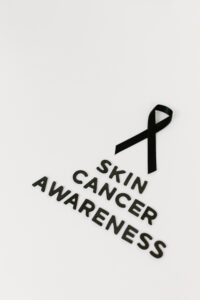May is skin cancer awareness month; and when you come in for a professional treatment at iBellaLifestyle, we do a thorough consultation and skin analysis; if we notice any skin abnormality we will point it out.
With more than five million cases diagnosed yearly, skin cancer is the most common cancer in the United States. Ultraviolet radiation from the sun absorbs at various levels of the skin, all the way down to where cells are created and can lead to mutated cell generation.
If you see a suspicious looking blemish on your skin pay attention to its asymmetry, border, color, diameter and notice if it evolves; if so, make an appointment with a board certified dermatologist.
Please remember to use sunscreen every day even when it’s cloudy. Use a 30 SPF or higher water resistant broad spectrum sunscreen that protects from UVA-UVB radiation. Wear sunglasses that block UV rays, avoid tanning beds, wear protective clothing and a hat. Perform regular self-exams to detect any abnormalities, and have a full-body scan at a Dermatology office once a year.
Keep in mind that sunscreen by itself isn’t sufficient to ensure sun safety; it’s important to wear sun protective clothing. And keep in mind that UV rays from the sun may cause further sun damage on hazy and cloudy days.
Your skin gets sun damaged from sun exposure starting in childhood to present. Make sure to apply sun cream 30 minutes prior to sun exposure and reapply every two hours to all exposed skin. It’s recommended by the Skin Cancer Foundation to use about one ounce of sunscreen to cover the entire body.
Physical sunblocks contain titanium oxide as well as zinc oxide; they work by scattering and blocking the rays before they penetrate the skin whereas chemical blocks contain octisalate and avobenzone which absorb UV rays preventing sun damage which could lead to skin cancer.



